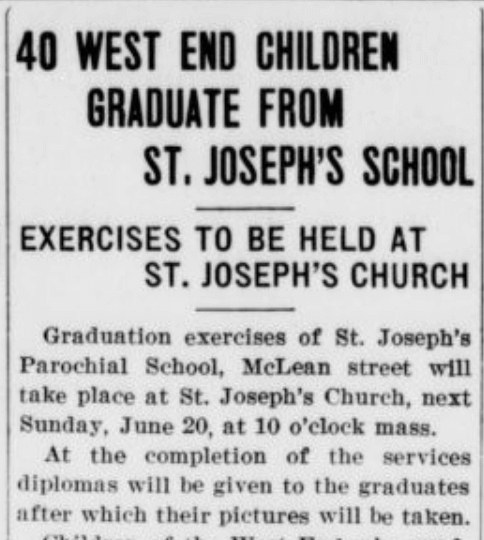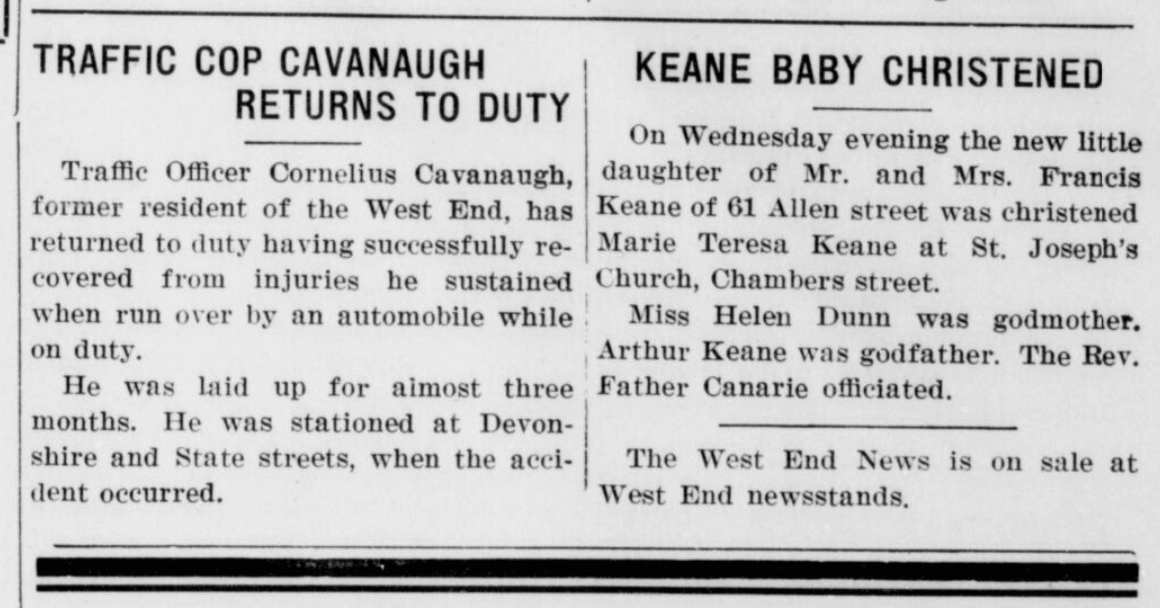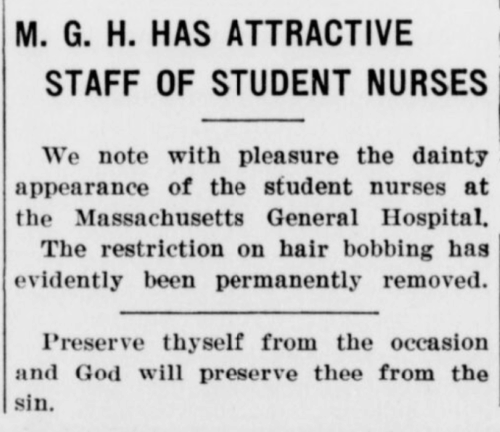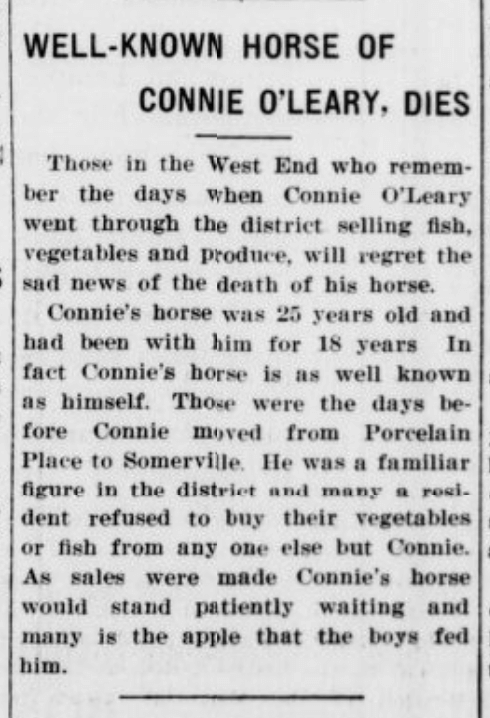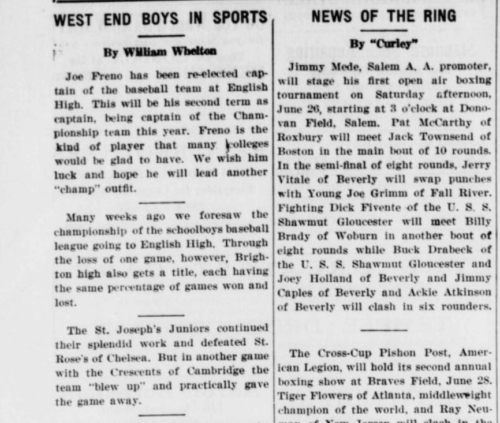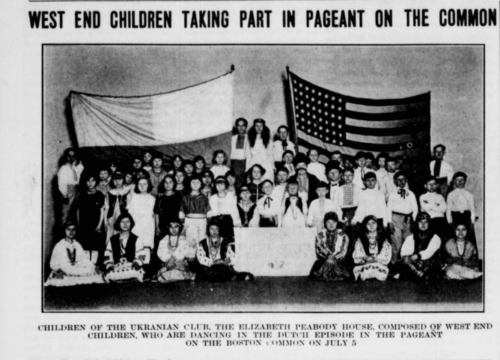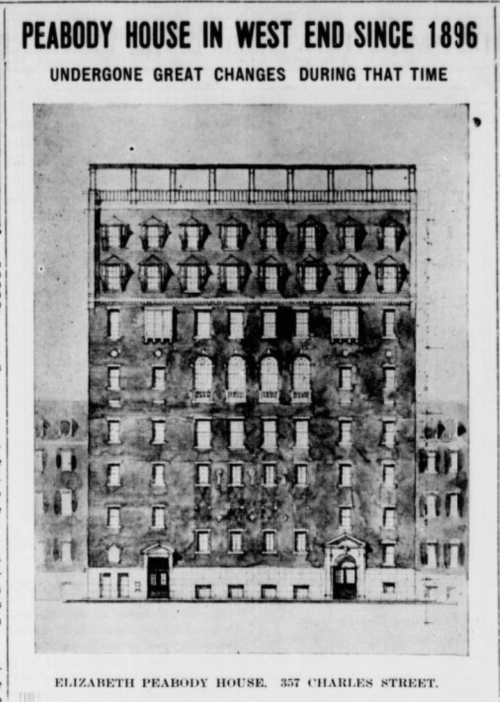The West End News: Headlines in the Summer of 1926
Over the course of four months in the summer of 1926, Lou Coffee and Francis R. Whelton published a newspaper by West Enders for West Enders. These papers gave a glimpse into the diverse immigrant neighborhood facing the introduction of cars, lack of transit options, and mundane challenges in their daily lives. Part two of this series outlines some of the most eye-catching headlines of the neighborhood paper.
In the summer of 1926, The West End News did not concern itself with the first woman to swim the English Channel nor the claims by explorer Richard Byrd that he flew over the North Pole. The News was a paper by the neighborhood for the neighborhood. There were plenty of other papers which could share news of the world; The West End News reported solely on Boston’s West End.
That summer, Lou Coffey and Francis R. Whelton produced sixteen four-page issues of the paper. Each one contained local news, editorials, recipes, sports reports, and the life cycle events of the neighborhood residents. The West End News may have only run for one summer, but it captured a snapshot of life in a diverse and flourishing part of the city in the midst of ongoing change.
Most of the articles featured in the News were local stories that helped residents keep up with their neighbors. Engagements, children’s birthday parties, a young Jewish boy’s bar mitzvah, neighbors’ illnesses and injuries, and openings of new businesses were all reported. One article warned men to behave now that new young nurses had moved into Mass General Hospital and that restrictions on the fashionable 1920s hair bob had “evidently been permanently removed.”
Another headline announced the death of a “well-known horse” of a local peddler who was known to accept apples from local children. A printer moved his business to the neighborhood to take advantage of the location and an immigrant from present-day Ukraine dressed hair on Chambers Street., In another article, a woman who had fled from pogroms in Poland graduated from law school and argued that “with the right to vote women should participate in all the social and political affairs of the community.”
The goings on of local settlement houses and sports clubs including the Elizabeth Peabody House, West End House, and Hecht House were prominently featured in the News. Local boys winning sports or becoming successful in vaudeville were equally highlighted in the latter half of the paper. The accomplishments of children of the West End, regardless of age, were of great pride and interest to the readers of the paper.
Local activities in the summer of 1926 included trips for children to vacation at summer camps in New Hampshire, participation in celebrations for the 150th anniversary of American Independence, and trips to the West End Branch of the Boston Public Library where librarian Fanny Goldstein was in the process of curating a diverse collection of books (all reported in the News of course).
The News also showed signs of the fascination with local history that still prevails in the West End. One article interviewed a fifty-year resident of Phillips Street who had once been enslaved in Virginia. George Towle escaped to freedom by serving the Union Army during the Civil War and eventually made his way to Boston.
The thirty-year anniversary of the Elizabeth Peabody House prompted a retrospective on the growth of the settlement house and its impact on the neighborhood. In particular, the article highlights the numerous productions of plays made possible by the Peabody’s theatre space. It also touts the nominal rental fees. Another issue featured a historical article about the early New England practice of giving students merit awards.
Most of all, The West End News was a portrait of a neighborhood by people who valued where they were and the people who lived alongside them, regardless of national origin or religion. The neighborhood was loved in the moment. Yet change was on the horizon. Rumors spread of a ten-plus story hotel coming to the West End were flying and the widening of Cambridge Street had already led to an influx of traffic. One article noted that “When all the plans, in formation for the development of the West End, are completed, it is quite possible that the West End of ten years hence, will be far different from the West End of today.” Change was coming, but in the summer of 1926, the West End was preserving its past and connecting the community of its present.
If any of these headlines sparked your interest, the entire run of The West End News is available as high quality scans through the Boston Public Library. Explore the West End of 1926!
Article by Jaydie Halperin, edited by Bob Potenza.
Sources: Boston Public Library, The West End News Collection, Digital Commonwealth; History.com “A year in History, 1926”.



